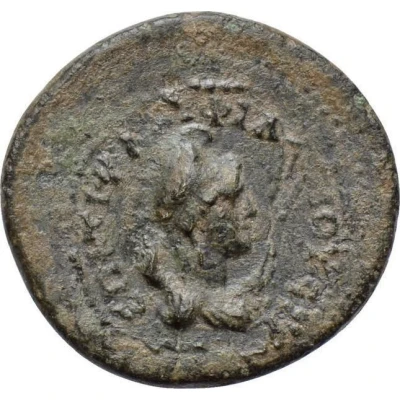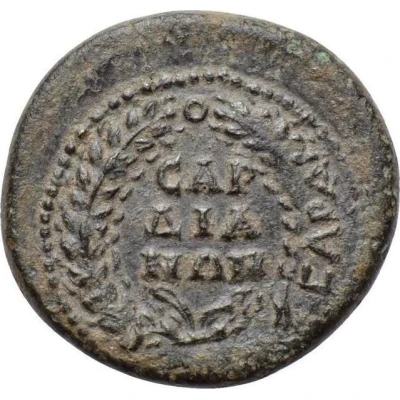


© Numismatik Naumann GmbH
Hemiassarion - Vespasian ϹΑΡΔΙΑΝΩΝ; Sardis
| Bronze | 2.48 g | 12.5 mm |
| Issuer | Sardes (Conventus of Sardis) |
|---|---|
| Emperor | Vespasian (Titus Flavius Vespasianus) (69-79) |
| Type | Standard circulation coin |
| Years | 70-73 |
| Value | Hemiassarion (0.05) |
| Currency | Drachm |
| Composition | Bronze |
| Weight | 2.48 g |
| Diameter | 12.5 mm |
| Shape | Round (irregular) |
| Technique | Hammered |
| Orientation | Variable alignment ↺ |
| Demonetized | Yes |
| Updated | 2024-10-10 |
| Numista | N#272034 |
|---|---|
| Rarity index | 97% |
Reverse
Inscription in three lines within laurel wreath tied below
Script: Greek
Lettering: CAΡ/ΔIA/NΩN
Translation: Sardisian
Comment
Time of Vespasian (69-79AD). The Phrygian cap was a symbol of the Anatolians and was used by the Romans to represent barbarians. It only became associated with liberty in the American and French Revolutions, when it was confused with the pileus, a felt hat given to Roman slaves when freed.These are often overstruck. The illustrated coin is struck over another hemiassarion of Sardes, issued most likely under Nero (showing CAPΔ from EΠI TI MNACEOY CAPΔIANΩN on the obverse and KAIC from NEPΩN KAICAP, Nero Caesar, on the reverse)
Interesting fact
One interesting fact about this coin is that it features an image of the Roman emperor Vespasian, who ruled from 69 to 79 AD, on one side, and a depiction of the goddess Tyche on the other. Tyche was the patron deity of the city of Sardes, where the coin was minted, and her image on the coin symbolized the city's prosperity and good fortune.